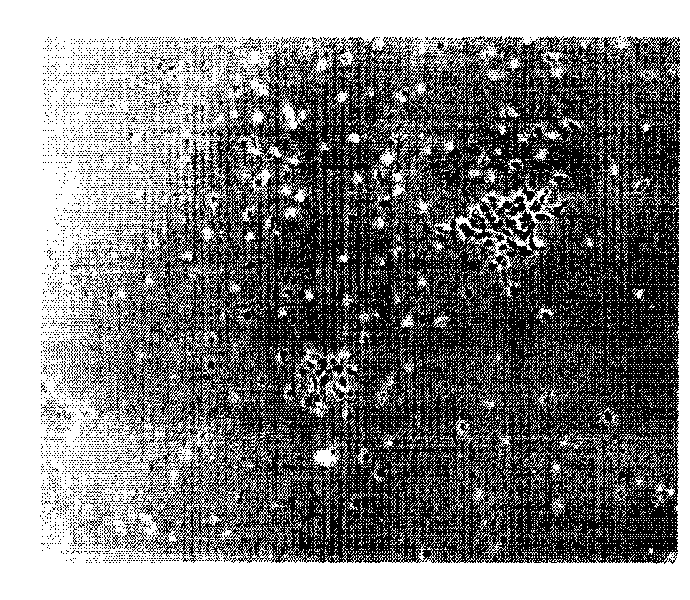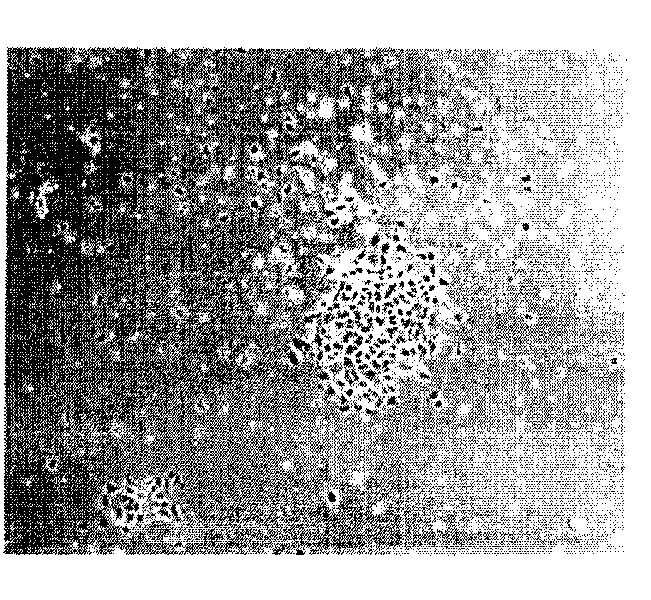Corneal posterior lamella and use thereof
A cornea and posterior plate technology, applied in the field of medical materials, can solve the problems of lack of observation results, shedding of offspring cells, tumorigenesis, etc., and achieve the effect of overcoming low proliferation ability and strong proliferation ability
- Summary
- Abstract
- Description
- Claims
- Application Information
AI Technical Summary
Benefits of technology
Problems solved by technology
Method used
Image
Examples
Embodiment
[0030] 1. Isolation and culture of cat corneal endothelial precursor cells
[0031] Put the cat's eyeballs into a sterilized dish after being washed with PBS. Carefully separate the conjunctival tissue, carefully scrape off the epithelium, cut the corneal tissue 1 mm outside the limbus, and place it in DMEM / F12 (1:1) culture solution. Gently scrape off the corneal epithelial cells with a razor blade, and carefully peel off the Descemet's membrane containing endothelial cells with ophthalmic forceps. Cut the Descemet membrane repeatedly, add 0.2% composite collagenase (the volume ratio of Descemet membrane tissue block to collagenase is about 1:5, and the volume ratio of tissue block to collagenase is 1:5, which can achieve the goal of not wasting collagenase , less damage to cells, and can effectively digest the Descemet membrane, shortening the operating time. The volume ratio of tissue block to collagenase is lower than 1:5, and the amount of collagenase is relatively large...
PUM
 Login to View More
Login to View More Abstract
Description
Claims
Application Information
 Login to View More
Login to View More - R&D
- Intellectual Property
- Life Sciences
- Materials
- Tech Scout
- Unparalleled Data Quality
- Higher Quality Content
- 60% Fewer Hallucinations
Browse by: Latest US Patents, China's latest patents, Technical Efficacy Thesaurus, Application Domain, Technology Topic, Popular Technical Reports.
© 2025 PatSnap. All rights reserved.Legal|Privacy policy|Modern Slavery Act Transparency Statement|Sitemap|About US| Contact US: help@patsnap.com



